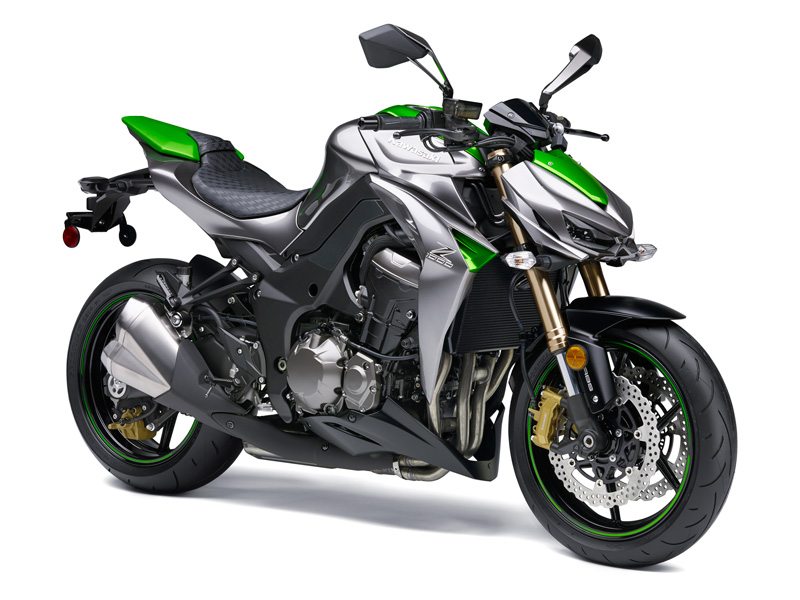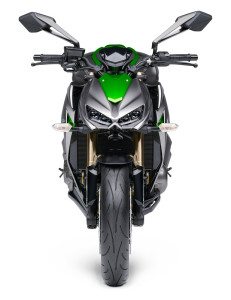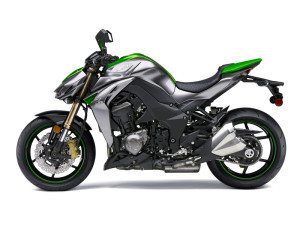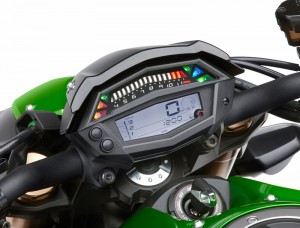
What’s the most important letter in Kawasaki’s alphabet? The mighty Z, of course.
In 1973, Kawasaki’s Z1, a 903cc four-stroke in-line four capable of speeds up to 130 mph, helped usher in the era of modern era of performance. Four years later, Reg Pridmore earned his second AMA superbike championship on the Z1’s successor, the 1,015cc Z1000. The Z series of the ’70s gave way to the ZX (Ninja) series in the early ’80s, spawning a broad range of sportbikes in the years since.

On the Z1’s 30th anniversary, Kawasaki introduced a radical interpretation of the Z1000, a naked sportbike that turned heads with sharp angles, dual stainless steel exhaust pipes on both sides and red engine covers that matched the red wheels and seat on the black bike—or looked odd on the orange bike with orange wheels. Based on the ZX-9R, the Z1000’s larger bore gave it a displacement of 953cc and more low-end torque. It got a minor update for 2007, and a major overhaul for 2010, which included even more space-age-looking bodywork, a displacement bump to 1,043cc and other improvements.
Though the modern Z1000 has never had trouble getting noticed, for 2014, Kawasaki has gone even more sci-fi, giving the Z1000 an all-new look that would be at home on the set of sequels to The Matrix or Terminator. From its tiny LED headlights to its tapered tail section, the new Z1000 looks compact and aggressive. Kawasaki has embraced a new styling language that it calls “Sugomi,” which it says gives the bike the appearance of a crouching predator and influences such details as the special “Z” logo ignition keys, machined aluminum steering stem bolt and textured “Z” motif seat cover.

Beyond styling, the Z1000’s 1,043cc, DOHC, liquid-cooled, 16-valve engine has received many of the same updates as the 2014 Kawasaki Ninja 1000, such as revised intake cams to boost low-to-midrange torque, and new airbox vents and cylinder-connecting passageways to boost performance in the upper registers. A revised ECU, an updated cool air intake system, a new air filter element, equal-length velocity stacks and Digital Timing Advance are said to improve sound, feel and throttle response. Shorter overall gearing complements the revised engine, while a slightly taller 6th gear helps the bike stay smooth at highway speeds.

Based on the Ninja ZX-10R’s chassis, the Z1000’s aluminum frame curves over the engine, cradling it from above and bolting solidly to it in three places, with a rubber-backed fourth mount provided for added vibration isolation and torsional rigidity. The main frame and swingarm pivot pieces are cast as a single unit with minimal welds, and the new subframe tapers to a very shallow cross-section at the rear.
Suspension is handled by a new fully adjustable 41mm inverted SFF-BP (Separate Function Fork – Big Piston) fork up front and a preload- and rebound-adjustable horizontal back-link shock in the rear. New one-piece monobloc radial-mount front brake calipers with a race-spec radial pump master cylinder are said to improve power and feel, and ABS is now standard. New lightweight six-spoke wheels reduce unsprung mass, and they’re shod with grippy sportbike rubber.
The future begins at the end of the alphabet. What it will cost and when it will arrive remain to be seen.








ABS = weaksauce